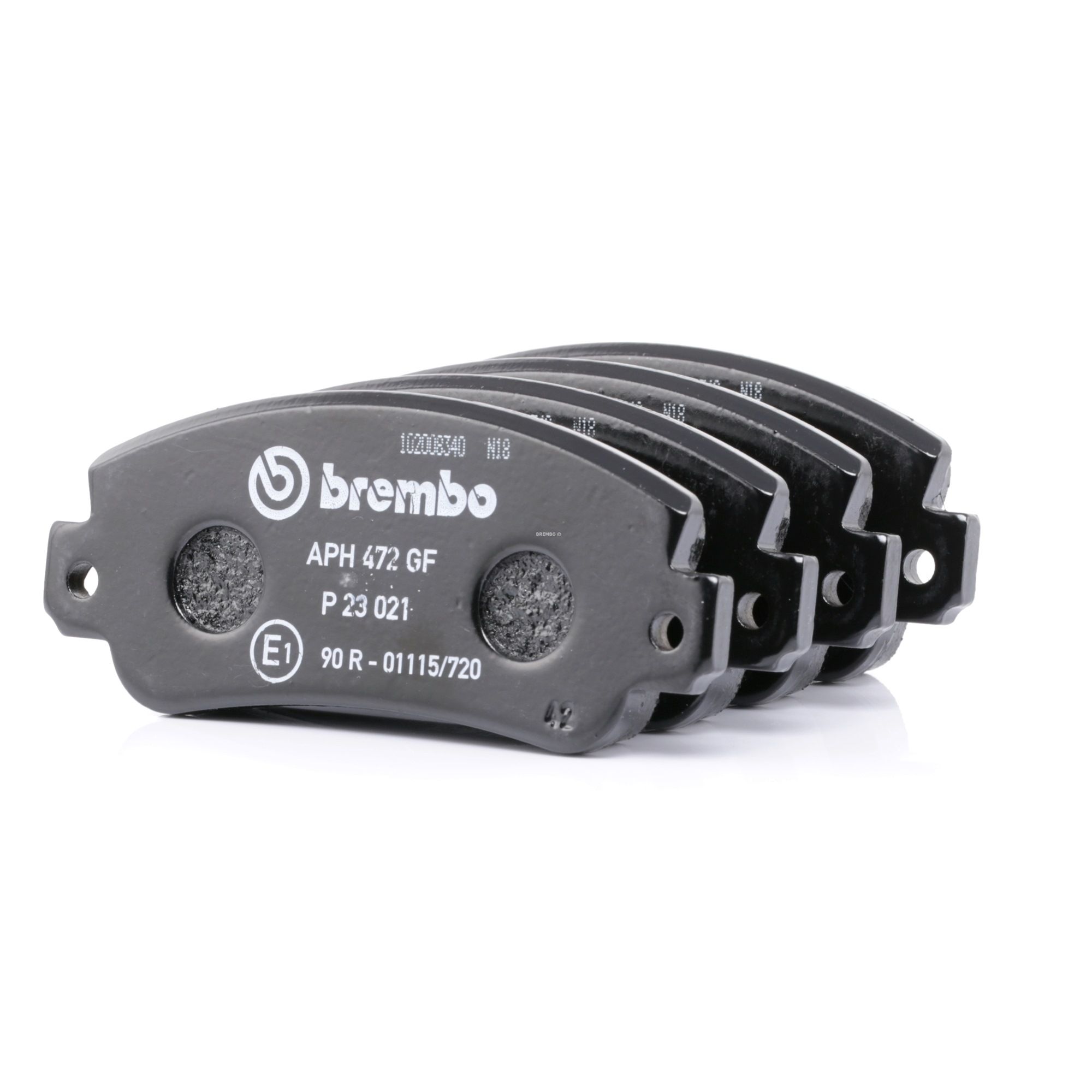Brake Pad and Fluid Warning Lights: The Most Common Brake Lights on Your Dashboard
One of the most common indicators that can illuminate on your vehicle's dashboard is the brake pad and fluid warning lights. These alert you when the brake pads are worn down to a certain level, indicating the need for replacement to ensure proper braking performance and safety. The brake fluid warning light informs you that brake fluid levels are low or there might be leakage, which can compromise brake function as well as the safety of your vehicle. It's important to understand what these warning symbols mean to ensure both your safety and the longevity of your vehicle. Here we will take a look at brake warning lights, so you can understand their meanings and effectively address any underlying issues.
Brake warning light meaning: understanding your vehicle's safety signals
When your brake light on the dash comes on, it typically indicates that either your parking brake is engaged or there's a brake-related issue requiring inspection.
- It's essential to understand that your brake warning light can signify various issues, necessitating expert diagnosis by a brake specialist.
- If your warning light stays illuminated consistently, potential causes may include the need for parking brake adjustment.
- Should your brake service warning light activate when you push the pedal down, a possible reason could be low brake fluid levels in the master cylinder.
- Prompt action is crucial if your Anti-lock Braking System symbol comes on, as it indicates an immediate need for your car brake system parts to be inspected.
- Minimise driving your vehicle when the brake warning light is on, and promptly seek the expertise of a brake specialist for diagnosis and repair.
- In situations where driving to the repair shop isn't feasible, consider contacting a mobile brake repair service, allowing them to diagnose and address the issue at your location.

One warning sign to never ignore is the dashboard brake warning light symbol, indicating a fault in the braking system. If this comes on when you press the brake pedal, it could indicate two potential issues. A braking system fault sign can indicate hydraulic loss on one side of your vehicle. This means the braking force isn't being properly transmitted to one set of wheels, leading to uneven braking and potentially compromising your ability to control the car during an emergency stop. The other possibility is a low brake fluid level in the master cylinder. As the main reservoir for your car brake fluid, a low level can prevent the system from properly pressurising, greatly reducing overall braking effectiveness.
Brake pad warning light: what does it look like and what does it mean?
The brake pad warning light illuminates when it has been detected that the brake pads are worn down or need servicing or replacing. The actual pads are symbolised by the outer, dashed lines. The pads may also squeak or pulse which indicates that the time has come to replace them.
Here's a breakdown of what you need to know:
- Symbol: the brake pad warning light is often represented by a circle with an exclamation mark in the centre. The outer part of the circle may be comprised of dashed lines that resemble the shape of new car brake pads.
- Meaning: this light indicates that the brake pads, the components that create friction against the rotors to slow down your car, have worn down to a point where they need replacement. Worn pads become less effective at stopping your car, posing a safety hazard.
- Additional symptoms: while the warning light is a clear sign, some vehicles might not have a specific brake pad wear sensor. In such cases, be alert for these additional symptoms that might indicate worn brake pads:
- Screeching or grinding noises: this is a built-in warning from your brake pads that they’re nearing the end of their lifespan.
- Increased stopping distance: as the pads wear down, they become less effective, requiring more pressure on the brake pedal to slow down the car.
- Vibrating brake pedal: this can indicate uneven wear on the pads or warped rotors.
Don't ignore the brake pad indicator light or any of the symptoms mentioned above. Worn brake pads can significantly reduce braking performance, increasing stopping distances and compromising your safety and the safety of others on the road.
What does the brake pad warning light mean?
The brake pad warning light means your brake pads are getting worn thin and need to be replaced soon. It's a safety system that lets you know your car's stopping power is potentially compromised.
If a sensor detects that the brake pads have worn down to an insufficient thickness, a warning light will illuminate indicating a reduction in the vehicle's braking capability, which may increase the risk of accidents. This warning light for brake pads mustn't be ignored.
Brake pad warning light - how long do I have?
Get your car checked as soon as possible after the warning light comes on. Even with some pad material remaining, your stopping distance can increase significantly.
This is a major risk since continuing to drive on worn pads can lead to metal-on-metal contact between the backing plate and the disc. This damages the disc and is a much more expensive repair than replacing the brake pads themselves.
Brake fluid warning light: what you need to know
The low brake fluid warning light often illuminates due to a fault in the brake system. The brake warning light is most likely on because the brake fluid level is low. When it's safe, stop and consult your owner's manual to find the brake fluid reservoir. Then, top it up with the correct brake fluid. This should turn off the brake warning light.
Even minor faults in these areas can result in a notable reduction of brake fluid over time. Additional causes may include:
- Worn brake pads: the brake fluid level may drop as the brake pads wear down. This is due to the brake calipers needing to extend further to maintain contact with the pads as they wear, which can result in a small amount of fluid being displaced from the reservoir.
- Faulty master cylinder: the master cylinder is responsible for pressurising the brake fluid and distributing it to the calipers or wheel cylinders. If it is faulty, this can lead to a drop in fluid level.
- Overheating: extreme heat can cause the brake fluid to expand, causing a temporary increase in pressure within the brake system. This can make the fluid overflow and trigger the warning light.

The handbrake warning light on your car's dashboard is typically a red exclamation mark circled in red. It tells you if your parking brake is still engaged when you're trying to drive. Here's what to do if it comes on:
- Check the handbrake: make sure the parking brake is fully disengaged. Release the lever and ensure it's all the way down.
- Listen for unusual sounds: pay attention to any grinding noises coming from the brakes. This could indicate the handbrake is still partially engaged and dragging.
- Look for other warning signs: if the light stays on after disengaging the handbrake and you don't hear grinding, there might be a sensor issue.
- Pull over safely: if the light comes on while driving, don't ignore it and pull over as soon as possible.
- Consult a mechanic: if the handbrake warning light stays on after you've checked the parking brake and listened for noises, it's best to have your car checked by a mechanic.
Parking brake warning light: understanding its significance and troubleshooting tips
The parking brake warning light, typically a circled "P" on your dashboard, plays a key role in your car's safety system. The light turns on when the parking brake is engaged, reminding you to release it before driving. Disengaging the parking brake should turn the light off.
In some cases, a lit parking brake light even with the parking brake disengaged can indicate problems with the parking brake mechanism itself or a malfunctioning sensor. If the parking brake warning light remains lit, you should firmly disengage the parking brake lever, as it might not be fully released. Your car's manual should also have specific troubleshooting guidance, which could involve checking brake fluid levels or other procedures unique to your vehicle.
What causes the brake light on the dash to stay on?
Low brake fluid, worn brake pads, or a faulty sensor could cause the dashboard brake light to stay lit. There are several reasons for this, such as the parking brake being engaged, or something more serious. Regardless of the cause, a lit brake light signifies that you should get your car checked right away to ensure safe braking performance.
What to do when you see a braking system warning sign?
If you see a brake system warning, you must pull over immediately in a safe place, examine the brakes, and get expert assistance. A lit brake system warning sign on your dashboard shouldn't be ignored. It indicates a potential issue with your car's ability to stop safely. If the light is on when you first start the car, don't drive it at all. Address the brake issue as soon as possible to ensure your safety on the road.
FAQ
Can I still drive with a brake warning light?
Driving with a brake warning light is not recommended. Get your brakes checked ASAP for safety.
Can I drive with the brake pad warning light on?
This might indicate worn pads. Drive cautiously and schedule a brake inspection soon.
Can you drive with a brake fluid warning light?
A lit brake fluid warning light means your car's braking system might have a critical issue. It usually indicates either low brake fluid or a fault in the system. Don't drive – brake failure could happen if the problem worsens.
Top products related to this topic:























